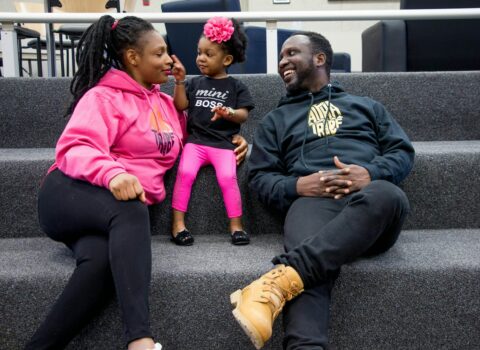What is Christmas without Santa Claus? While many celebrate the holiday without Father Christmas or Santa Claus being a part of the event, there is no doubt that the legend of Santa Claus plays a big part in most Christmas time celebrations.
According to the legend, Santa Claus delivers gifts to good little boys and girls on Christmas Eve while they are sleeping, so that when they wake up on Christmas morning, December 25th, there are Christmas presents there for them to open.
Nothing beats waking up as a young child on Christmas morning and excitedly discovering all of the wonderful things that Santa Claus has brought you during the night!
It’s widely believed that the Santa Claus we all know and love today originates from Saint Nicholas of Myra. Some people even still refer to Santa as ‘St Nick” so it seems likely that this is where the legend or myth began.
So, Why Does Santa Give Gifts At Christmas?
St Nicholas was an early Christian priest from Lycia who lived in Asia Minor in the 4th Century AD during the time of the Roman Empire. Many legends exist about Saint Nicholas’ life and deeds, but most of them are likely fictional embellishments on stories told by his followers at a later date.
It was not until the 10th Century that Saint Nicholas would become associated with gift-giving, owing to two stories regarding his life. The first was a famous incident in which a poor man in his hometown of Patara came to the saint asking for help.
His three daughters were supposed to be married off, but he had no funds available for their dowries so they could wed. After praying all night, Nicholas made a large bag of gold by the morning and tossed it into the house through an open window while no one was looking, where it landed in stockings that had been left hanging out to dry.
The second story is perhaps more well known due to its lasting impact on popular culture. On Christmas Eve during the 10th Century, Nicholas was returning from a trip to Lycia.
On a wintry night, he came across a poor family who had exhausted their supply of fuel for heat and were on the verge of freezing to death. Nicholas tossed a small bag of gold into their home through an open window, where it landed in stockings that had been left hanging out to dry.
The two stories were recorded long after Saint Nicholas’ death by his followers, but his association with gift-giving was further cemented during the 12th Century when he became known as Sinterklaas. The tradition was introduced by the Dutch and spread across Europe over time until America got involved.
A Dutch settler named Jacob Dutch Klaasens (Jacob “Sinterklaas”) began distributing gifts to children, and by the 1800s he became Santa Claus. He is now known in most of the world as Father Christmas, but his name is also used for many gift-giving Santas.
It is believed that Jacob’s parents emigrated from Holland and their son followed in their footsteps by moving to America. There he ascended to become a wealthy businessman and philanthropist, continuing the tradition of giving gifts to children on December 25th by distributing candy canes.

Since 1823, Santa Claus has become an integral part of Christmas and is not only responsible for gift-giving. In fact, he is a figurehead for the entire holiday season that extends from Thanksgiving to New Years. For many people, Santa Claus represents good cheer, good humor, and good times with family and friends.
However, in recent years Santa Claus has become less popular due to the over-commercialization of Christmas and the widespread popularity of his “look-and-feel” clones such as Frosty the Snowman, Rudolph the Red-nosed Reindeer, and even SpongeBob SquarePants.
However, as long as the tradition of gift-giving exists, there will always be someone to fill the shoes of Santa Claus.
Since Christmas, like many other holidays and traditions, is not supported by any concrete historical evidence or established origin story, it has become subject to numerous myths and legends.
Not only have Christian elements been added onto a pagan holiday that did not even originate within Christianity, but a legend has also emerged surrounding Santa Claus himself.
One of the most well known mythological stories about him is that he only gives gifts to good boys and girls on Christmas Eve and leaves coal for badly behaved children.
However, this legend is not true. On Christmas Eve, when he checks his list in the North Pole, everyone on the list is a good child. At no other time does he leave coal in the stockings of bad children.
Sometimes this part of the story is used by parents to manipulate their children into good behavior, with many telling their children that if they don’t behave, Santa won’t bring them any presents. This is part of the legend that I’m not a fan of, as I’m not OK with coercing children in this way.
In fact, the myth of Santa Claus always troubled me as it feels dishonest to lie to children in this way. However, if we simply see Santa as a figurehead for all of the good parts of Christmas, I can be more comfortable with the idea.

So the myth of Santa Claus has been a big part of Western culture for many, many years and will no doubt continue through the ages. We’ve already learned about why we buy gifts at Christmas, and the legend of Santa Claus is just another piece of the puzzle.
Whether Santa still visits you or not, he embodies the true spirit of Christmas which is to spread joy and goodwill to all, and we all know that giving gifts to people, no matter how small, is a great way to spread joy and happiness.
Happy Gift Giving!






